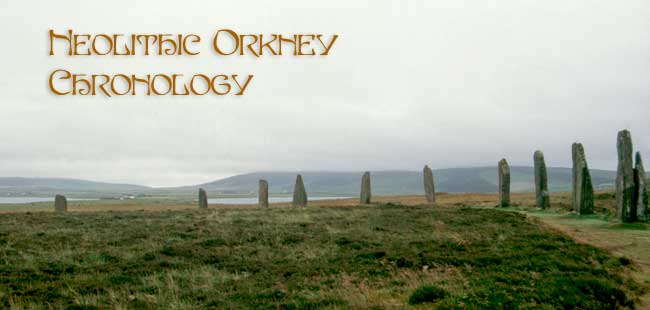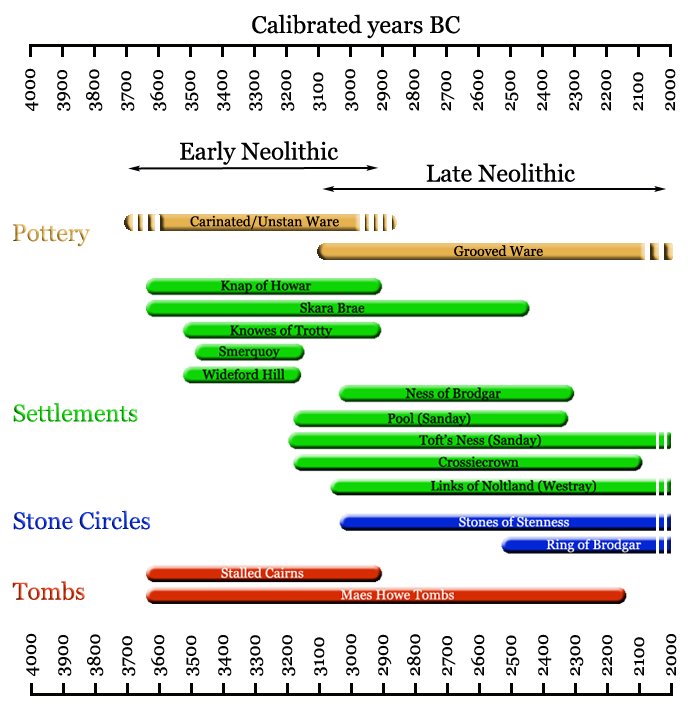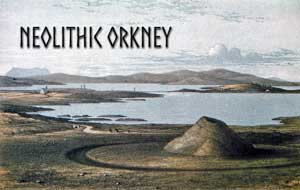
The Neolithic in Britain can be divided in to two broad periods— the Early and the Late— and the same applies in Orkney. The Early Neolithic is marked by a shift in lifestyle from hunting and foraging to farming and the first pottery to appear in the islands, a style known as Unstan Ware. The Late Neolithic, which is characterized by a new type of pottery known as Grooved Ware, sees dramatic shift in emphasis from simple farmsteads to a more monumental sort of architectural expression— great megalithic tombs and stone circles.
Until the middle of the last century, constructing a chronological framework for prehistoric archaeology anywhere in the world was a hazardous undertaking. Establishing a relative chronology, how artifacts or cultures fit into a sequence,was fairly straight-forward (if highly contentious) issue but any sort of absolute dates (i.e. calendar dates BC or AD) were almost impossible to determine. So, while you could work out that A was earlier than B, you could not say with any certainty whether is was a hundred years earlier or a thousand.
Pottery is a superb material for working out a relative chronology— it is in high demand and it is highly breakable— so it has to be regularly replaced. It is also a means of expression, and shapes and applied decoration change through time. However, it was impossible to say how long a particular ‘style’ lasted.
A dramatic breakthrough occurred in the 1940s, however, with the use of nuclear physics to determine the point in time at which an organic material (wood or bone, for example) died, a method known as radiocarbon or C14 dating. Steady advances in laboratory techniques and improved sampling methods has made radiocarbon ever more accurate.
The latest advance involves the application of modern statistical studies (Bayesian modelling) . Essentially this means that radiocarbon dates (or dates extracted by other scientific methods) are weighted according to their archaeological context, their stratigraphic position, for example, or their relationship to specific archaeological features such as a floor surface, a hearth or a heap of midden material. In addition, advances in the treatment of individual samples has led to much more precision in the resultant dates.
The chart below gives the range of dates for each site (or type of site). They do not account for any interruption in occupation that may have occurred.

Note: By convention, all dates that are capitalized BC have been calibrated while those that are lower-case bc are raw and uncalibrated. Normally these will be expressed as falling within a range plus/minus.
Also, the old adage: “Put an arrow on the map; get two in the back.” applies here too.

